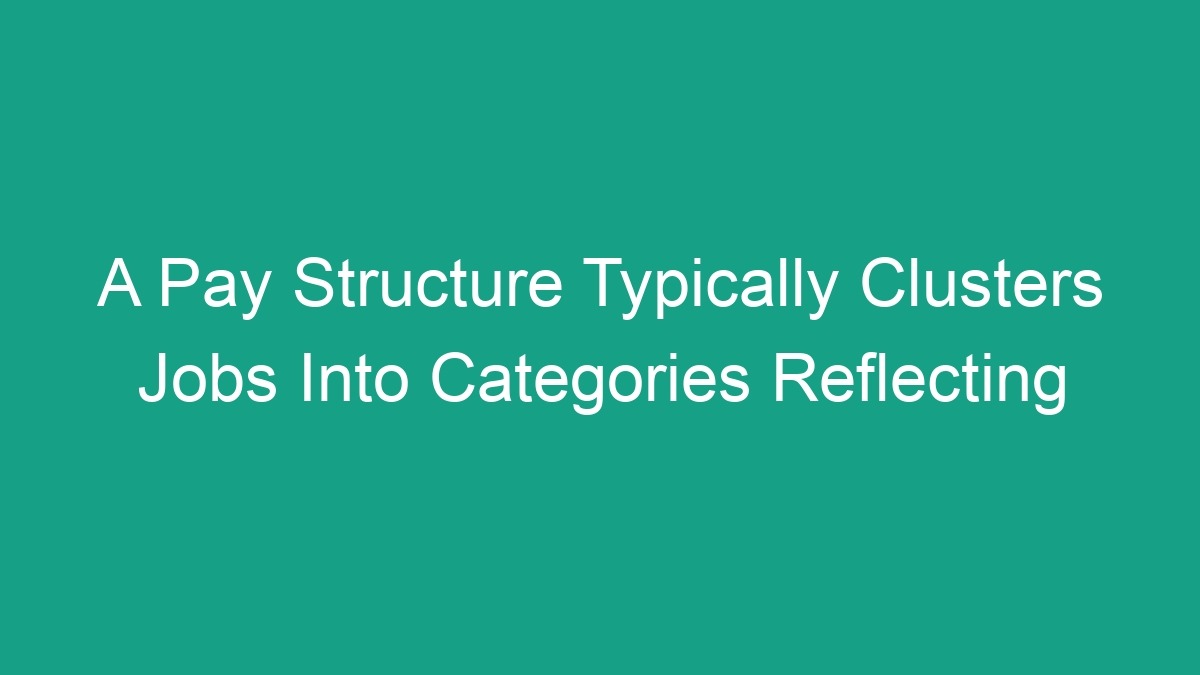
When it comes to compensation and pay structures within organizations, it’s crucial to understand how jobs are clustered into categories that reflect their value to the company. Pay structures are designed to ensure fairness and equity in compensation while also supporting the organization’s overall goals and objectives. In this article, we will explore the key components of a pay structure, the benefits of using such a system, and how it impacts employees and the organization as a whole.
The Components of a Pay Structure
A pay structure typically consists of several components that help organize and categorize jobs based on their value to the organization. These components include:
- Job Evaluation: This is the process of systematically determining the relative value of jobs within the organization. Job evaluation methods such as the point factor method or the ranking method help to assess factors like skill levels, responsibilities, and working conditions to assign a value to each job.
- Pay Grades: Once jobs are evaluated, they are grouped into pay grades or pay ranges based on their value to the organization. For example, entry-level positions may fall into a lower pay grade, while senior management roles may be in a higher pay grade.
- Salary Structures: These are the ranges of pay established for each pay grade. For example, a pay grade for entry-level positions may have a salary range of $30,000 to $40,000, while a pay grade for senior management roles may have a range of $100,000 to $150,000.
- Pay Policies: These are the guidelines and rules that determine how pay increases, promotions, and other compensation decisions are made within the organization. Pay policies ensure that compensation decisions are made fairly and consistently across the company.
The Benefits of Using a Pay Structure
There are several benefits to using a pay structure within an organization:
- Equity: A pay structure helps to ensure that employees are fairly compensated based on the value of their jobs. This can reduce potential conflicts and perceptions of unfairness within the workforce.
- Transparency: By clearly defining pay grades and salary ranges, employees can better understand how their compensation is determined and what they can expect as they progress in their careers.
- Retention and Motivation: A well-designed pay structure can help retain top talent by offering competitive compensation and providing a clear path for advancement. It can also motivate employees to strive for higher pay grades and take on more responsibilities.
- Organizational Goals: A pay structure can support the organization’s goals by aligning compensation with desired behaviors and outcomes. For example, a sales commission structure can incentivize performance and drive results in line with the company’s sales targets.
Impact on Employees and the Organization
The implementation of a pay structure can have a significant impact on both employees and the organization as a whole:
| Impact on Employees | Impact on the Organization |
|---|---|
| Provides clarity on advancement opportunities and potential earnings. | Helps manage labor costs by establishing clear guidelines for compensation decisions. |
| Reduces perceptions of favoritism and bias in compensation decisions. | Supports the attraction and retention of top talent by offering competitive pay ranges. |
| Drives motivation and engagement by providing clear goals for career progression. | Aligns compensation with organizational objectives and desired outcomes. |
Overall, a well-designed pay structure can contribute to a more satisfied and motivated workforce while supporting the organization’s strategic goals and objectives.
Conclusion
In conclusion, a pay structure typically clusters jobs into categories reflecting their value to the organization. By utilizing job evaluation methods, pay grades, salary structures, and pay policies, companies can create a fair and transparent system for compensating their employees. The benefits of using a pay structure include equity, transparency, retention and motivation, and alignment with organizational goals. Both employees and the organization stand to benefit from the implementation of a well-designed pay structure, leading to a more engaged workforce and improved performance.



